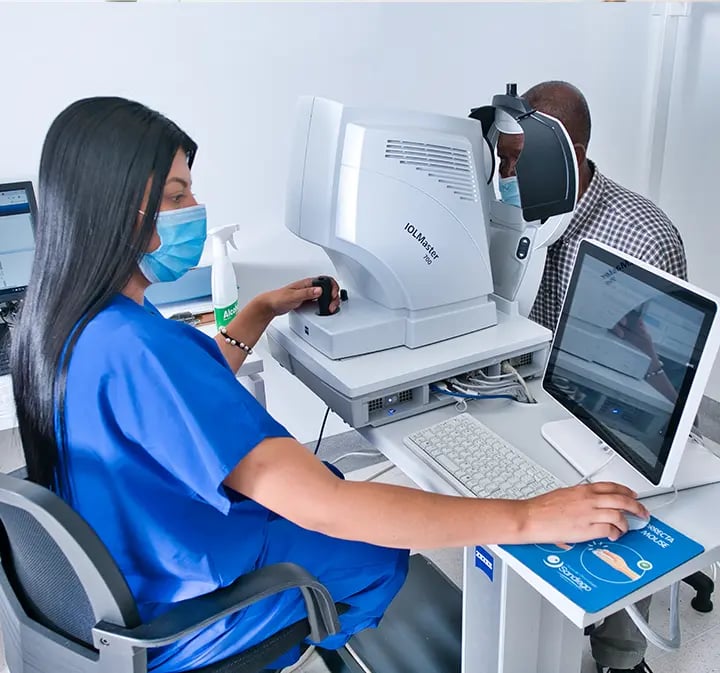Pachymetry

Pachymetry
What is pachymetry?
Pachymetry is a technique used in ophthalmology to measure corneal thickness. The cornea is the frontal transparent part of the eye, and it is essential for sight, as it helps to focus light in the retina. Pachymetry is used to accurately measure corneal thickness, which is useful to detect problems such as corneal edema, corneal degeneration and glaucoma.
It is performed by means of a device called pachymeter, which uses a beam of light to measure corneal thickness. It measures such thickness in different places: both in the center, and in the peripheral areas.
The data collected by the pachymeter are used in the diagnosis and follow-up of corneal disorders, and in the planning of procedures such as refractive surgery.
What is it useful for?
It measures the thickness of the cornea, the transparent membrane located at the front of the eye. Cornea usually measures between 500 and 600 microns in the central area, and between 600 and 800, in the peripheral part. In this sense, it is important to know its width before doing certain kinds of surgeries. Additionally, it is a factor to consider in the diagnosis and follow-up of certain corneal diseases or in the case of glaucoma.

 Pay your appointment
Pay your appointment

